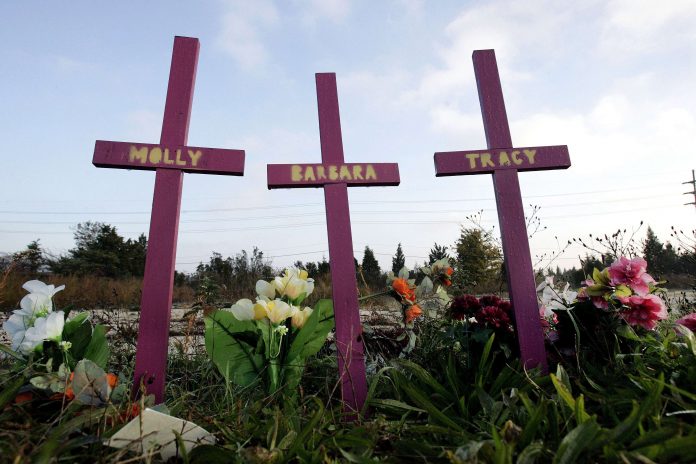
By Wayne Parry
Associated Press
ATLANTIC CITY, N.J. (AP) — The discovery of four dead women in a drainage ditch just outside Atlantic City was shocking news in 2006.
International media flocked to the seaside gambling resort. More than 100 detectives and prosecutors were assigned to investigate. Casino guests worried about safety, and the victims’ fellow sex workers began carrying hidden knives.
But as the years passed, the public’s attention and fear faded, and the case of the “Eastbound Strangler” – so named for the direction the victims’ heads were facing – remained unsolved.
The arrest earlier this month of a man charged with killing three women whose remains were found on a Long Island beach in 2010 has breathed fresh life into another long-dormant case with obvious parallels; the Gilgo Beach serial killings involve a total of 11 victims, most of whom were young, female sex workers. Yet the recent breakthrough, and the rekindling of public interest, only highlights a painful truth: Many similar cases – like the one in Atlantic City — remain open.
The FBI would not say how many killings of sex workers in the U.S. remain unsolved. Media accounts and statements from local authorities show a long trail of open cases, from nine women whose bodies were found along highways in Massachusetts, to 11 found dead in New Mexico, and eight more found amid the crawfish farms and swamps of southern Louisiana. The killings of other sex workers in Chicago, New Haven, Connecticut and Ohio, among other places, also remain mysteries.
From the days of London’s Jack The Ripper in the 1880s, serial killers, particularly those preying on sex workers, have often gotten away with it, in part because their victims were easy targets living on the margins of society.
Gary Ridgway, the so-called Green River killer convicted of 49 killings in Washington state, said at during a 2003 court hearing in which he pleaded guilty that he chose sex workers as victims because he knew they would not be missed quickly, if at all.
“I picked prostitutes because I thought I could kill as many of them as I wanted without getting caught,” he said.
Two women were out for an afternoon walk near Atlantic City in November 2006 when they found a body in a ditch. They called police, who quickly found three others nearby.
The $15-a-night motel in Egg Harbor Township behind which the four bodies were found is long gone. It was torn down in an attempt to clear a seedy area known for crime, drugs and disturbances – and the murders of Barbara Breidor, 42, Molly Jean Dilts, 20, Kim Raffo, 35, and Tracy Ann Roberts, 23.
Because it is near the ocean, like Gilgo Beach, the location has prompted much speculation by amateur detectives about a single killer, but some other online sleuths have pointed out that oceanside areas are often the remotest locations after hours on the densely packed East Coast. Gilgo Beach is about 3.5 hours drive from Atlantic City.
Gone in New Jersey are the four small wooden crosses someone erected on the site, along with the folded-up paper note bearing a Biblical quote promising justice that someone left there on one of the anniversaries of the discovery of the bodies.
For families left behind, each new day without word in the case of their loved one brings fresh pain.



















